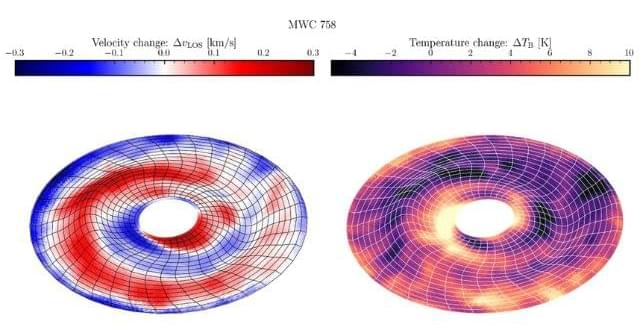New ALMA observations reveal that the discs where planets form are often slightly warped, challenging long-held assumptions and offering clues about the subtle misalignments seen in our own Solar System.



In an era of heightened geopolitical uncertainty, shifting supply chains, and growing decarbonisation challenges, the Council’s role in fostering transparency, cooperation, and pragmatic transition pathways has never been more vital.
About Crescent Petroleum
Crescent Petroleum is the first and largest private exploration and production company in the Middle East, with over 53 years of experience as an international operator in numerous countries including Egypt, Yemen, Canada, Tunisia, and Argentina, in addition to its continuing operations in the United Arab Emirates and Iraq.

A Japanese research team has rewritten the rules of diamond creation, turning carbon molecules into flawless diamond nanoparticles without the furnace-like heat or crushing pressure usually required. Led by the University of Tokyo, this breakthrough uses an electron beam to unlock what was once thought impossible—and it could change how scientists image and analyze matter forever.
Published on September 4 in the journal Science, this pioneering work could revolutionize material science and open new doors in technology. But beyond the technical marvel lies a profound shift in understanding how organic molecules react under electron beams.
China may soon lead the global race to mine minerals from the ocean floor

Engineers in Australia have created a new carbon-based material which allows supercapacitors to store as much energy as traditional lead-acid batteries and deliver charge much faster.
The new graphene materials are now being made in commercial quantities, says Dr Phillip Aitchison, chief technical officer of Monash University spinout Ionic Industries.
“We’re working with energy storage partners to bring this breakthrough to market-led applications – where both high energy and fast power delivery are essential.”


As revenues from the anti-aging market — riddled with hope and thousands of supplements — surged past $500 million last year, Emory University researchers identified a compound that actively delays aging in cells and organisms.
A newly published study in Nature Partner Journals’ Aging demonstrates that psilocin, a byproduct of consuming psilocybin, the active ingredient in psychedelic mushrooms, extended the cellular lifespan of human skin and lung cells by more than 50%.
In parallel, researchers also conducted the first long-term in vivo study evaluating the systemic effects of psilocybin in aged mice of 19 months, or the equivalent of 60–65 human years. Results indicated that the mice that received an initial low dose of psilocybin of 5 mg/kg, followed by a monthly high dose of 15 mg/kg for 10 months, had a 30% increase in survival compared to mice who hadn’t received any. These mice also displayed healthier physical features, such as improved fur quality, fewer white hairs and hair regrowth.
Emory University researchers identified that psilocin, a byproduct of consuming psilocybin, the active ingredient in psychedelic mushrooms, actively delays aging in cells and organisms.

The body movements performed by humans and other animals are known to be supported by several intricate biological and neural mechanisms. While roboticists have been trying to develop systems that emulate these mechanisms for decades, the processes driving these systems’ motions remain very different.
Researchers at University of Illinois at Urbana-Champaign, Northwestern University and other institutes recently developed new biohybrid robots that combine living cells from mice with 3D printed hydrogel structures with wireless optoelectronics.
These robots, presented in a paper published in Science Robotics, have neuromuscular junctions where the neurons can be controlled using optogenetic techniques, emulating the neural mechanisms that support human movements.
Maglev momentum: Why Asia speeds ahead while Western high-speed projects derail.
Smooth, fast, and futuristic. Maglev trains are transforming Asia’s mobility while the West struggling to keep up. Find out why.
How technological.

A new military test has showcased potential that large drones can work as motherships for smaller loitering munitions. The plan could get a push following a recent air launch of a Switchblade 600 loitering munition (LM) from a General Atomics’ Block 5 MQ-9A unmanned aircraft system (UAS).
It marked the first time a Switchblade 600 has ever been launched from an unmanned aircraft.
The flight testing took place from July 22–24 at the U.S. Army Yuma Proving Grounds Test Range.